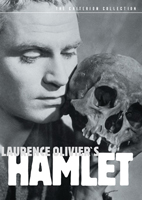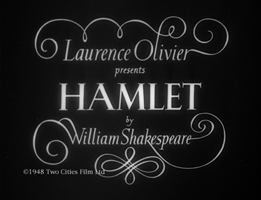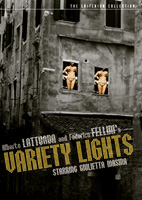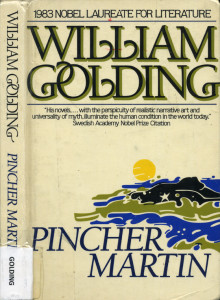
directed by Robert Stevens
written by Rod Serling
starring Earl Holliman and James Gregory
music by Bernard Herrmann
Friday, October 2, 1959, 10 PM EST on CBS.
In theory it would be fun to have videos to play at the top of these entries, but the full episodes aren’t on Youtube and there’s nothing really trailer-like that’s worthy of embedding, so I’m not going to force it. You should just go to Netflix and watch the whole episode. It’s only 25 minutes long; you can afford it.
If you have a Netflix account, maybe this link will take you straight there! But maybe it won’t. I’ve never tried linking inside Netflix before. Let me know if it works, I guess.
Spoilers forever, spoilers always, spoilers without warning. I mean, it’s The Twilight Zone. ALWAYS WATCH THE EPISODE FIRST. It’s short. And it’s incredibly convenient.
That you can enjoy any episode of any TV show ever made, at a moment’s notice, in pristine quality, at any moment, anywhere, is one of the greatest triumphs of the horrible techno-cultural dystopia we live in. Might as well take advantage.
This first episode is in many ways the purest of all Twilight Zone episodes, the most philosophically direct. It doesn’t try to embody our cosmic angst in the form of gremlins, or the Red Scare, or Hitler. It’s overtly about having a consciousness and being alone in it.
Up until the twist, that is. Then suddenly it might be about the space race or whatever. That’s your placebo if you need one.
Some words about twist endings: after you’ve seen one of these episodes, it’s natural to come away thinking of it as having been all about the twist. But of course the bulk of the episode isn’t actually experienced that way, because it hasn’t happened yet. Generally an episode is mostly “about” a particular configuration of vague unease, which the twist ending offers relief by exorcising. Yes, suddenly seeing those pig-faced people in “Eye of the Beholder” is pretty shocking, but it’s also the moment of clarity; don’t let it obscure the fact that 80% of the running time of that episode is not about pig-faced people — it’s about a mysterious atmosphere of foreboding. A twist retroactively gives this kind of static creepiness a pat dramatic function (“I see now, it was just building up to X”), which is a convenient opportunity for us to deny what we really experienced.
So yes, you could summarize “Where Is Everybody?” by saying it’s about the hallucination of an astronaut undergoing an isolation test, but that would be a rationalist evasion of the actual irrational experience. It’s only natural to define things by their endings if you’re so uncomfortable with uncertainty that you’ll leap at any opportunity to forget that you experienced it.
Most of us are that uncomfortable.
I think I’m going to keep score as we go along: this one unfurls its big reveal during the 20th of 25 minutes, giving us a shadow/light ratio of about 78/22.
The authority figure at the end says that this has been about “loneliness,” but it hasn’t. As far as loneliness goes, the episode could easily have been done with an ordinary empty town, which is not what this is. This is a town that keeps supernaturally insinuating people without actualizing them. The fear being prodded in the audience is not of being alone, but of being wrong about whether there are people around. The script is basically just a parade of “Hey, this kinda makes you feel like there are people around, doesn’t it? But you’re WRONG!” And that stings, a special spooky kind of sting.
Coffee percolating on a stove — a person must be nearby. WRONG!
Phone ringing — a person must be calling. WRONG!
Film running — a person must be at the projector. WRONG!
Body sitting in a car — a person must occupy that body. WRONG!
Why are these things uncanny? For the same reason that ghosts are uncanny, or for that matter that anything uncanny is uncanny: because the difference between being in the presence of another person and being alone is psychologically absolute. We’re either in social mode or we aren’t; there is no middle ground. That we might be unaware when there’s someone nearby is a source of fear, for obvious evolutionary reasons. This fear is aroused, and then sustained, by situations in which signals are mixed, in which our mind tells us that we are both alone and unalone. “Uh-oh… which is it? It’s very important that we get this right!” This, I believe, is the essence of everything we call uncanny: fear of the error of lapsing into seeing things as nonsocial when our life depends on seeing them as social.
If e.g. the wallpaper seems to be looking at you, the reason you’re more unnerved than if a person were looking at you is because you can’t find your way to a social resolution; you can never confront it socially and thus defend yourself against it, nor can you bond and make friends with it. A face in the wallpaper summons your social self but doesn’t give it enough to grab on to, thus leaving you in a state of incomplete transition. This is the “uncanny valley,” the land of not-quite-somebody, not-quite-nobody, home to ghosts and monsters and things that go bump in the night and mannequins and clowns and CGI.
This is why the town in “Where Is Everybody?” isn’t just abandoned but supernaturally abandoned (what you might call “haunted”). The hot stove is a social cue; but without the primary social stimulus of a person, we can’t consummate our internal socialization, and remain suspended in the state of girding ourself for an imminent encounter, our ears pricked.
But what’s great about this episode is that it goes deeper than that. It’s not actually about a ghost town; it’s about a ghost consciousness, a ghost existence. The town is only haunted because it’s all in the mind, because those are one and the same thing.
The twist ending tells us that it’s all in the mind because the mind has been locked in a box for three weeks — but my contention is that in these shows the real meaning is always substantially delivered before the big reveal. The isolation tank is just a safe way of displacing the essential business.
Note that there are various feints, some quite explicit, toward the standard cold war assumption that “the bomb” is probably responsible for any and all ominousness looming over Main Street USA. When I first watched this episode a few years ago, I’ll admit, I immediately associated it with the bit from Indiana Jones 4 where he stumbles into a nuclear test village full of dummies, and assumed something similar was about to befall our flight-suited amnesiac. (Or: downed behind enemy lines; tortured; killed…)
We sustain such speculations even as the protagonist talks several times about wanting to wake up, asks the mannequin if she can help him find psychiatric help, waxes about how it must all be a hallucination. All while we the viewers still have no particular conviction that this is necessarily a dream.
My point is: the episode implicitly suggests that even if this is waking life, some kind of military or apocalyptic misadventure, it is also the product of the protagonist’s mind. This is my overarching Twilight Zone thesis, as I said last time, and I couldn’t help seeing it in pretty much every scene. Here are just a few of the things I jotted down because, yes, I invested them with the profoundest meaning.
• “I must be a very imaginative guy. Nobody in the world can have a dream as complete as mine — right down to the last detail.”
• “Who’s up there? Who’s running the pictures?” The mind is the theater and the projector.
• Mirror: trying to get out, he bangs into himself.
• He plays tic-tac-toe against himself and WINS! Not a draw! Can you imagine? Maybe I’m joking, but there’s something to this.
The most remarkable moment in the episode is when — with somewhat unlikely literary agility — he quotes Dickens to his own reflection:
“‘You may be an undigested bit of beef.’… You see, that’s what you are. You’re what I had for dinner last night. You must be.”
He’s saying that to and about himself. The impression that he himself exists, that he is a person who can appear in mirrors, is, he declares, a dubious hallucination that he’s inclined to wave away.
It genuinely thrills me, how profound a thing that is, at the heart of this middlebrow TV episode. And I’m not imagining this depth, or imposing it! It’s right there on screen!
In watching it we don’t analyze and interpret it, per se, but we do experience it, as a kind of game. And why else does this game appeal?
Right, so then suddenly we’re in the good old military-industrial complex, where the stern general is reprimanding the snotty reporters for being condescending to this poor brave man. Psychological cleanup is underway: the paternal authority figure grimly forgives us our frailties, though they pain him. This is a world order of shame, and redemption through ordeal, in which the audience is expected to feel at home.
Yes, I know you went insane, son, tsk tsk, but at least it was in the pursuit of something very hard! Now you’re just going to grit your teeth, get back on that rocket, and bravely try again to fight, fight the madness! Do it for the USA! USA! Whew. Okay, I’m ready to buy my Sanka now.
(Why has he been banging the clock until it breaks? What does this supposed to mean? Time is his enemy, and he is thrashing out against it with his last bit of sanity? I don’t know. Anyone?)
Smugly, to the moon: “Next time it’ll be for real.” A pretty weird boast, given what we’ve just been through. It reads that way even to the casual viewer: next time what will be for real? And how will you know the difference?
Serling starts us out with:
The place is here.
The time is now.
And the journey into the shadows that we’re about to watch could be our journey.
If this were really about an astronaut in an isolation tank, that wouldn’t be true in the least.
Whereas by the time we get to the envoi, the show has had to backpedal. Now he lets you choose how personal to take it:
Up there, up there in the vastness of space, in the void that is sky —
up there is an enemy known as isolation.
It sits there in the stars waiting —
waiting with the patience of eons.
Forever waiting… in the Twilight Zone.
Basically, if you need to believe that the “enemy known as isolation” is just a kind of sci-fi menace from outer space, you’re welcome to. But if you’re willing to stick with the guiding metaphor of the “twilight zone,” you can hear that he’s talking about something much closer to home.
That calculated ambiguity is the wink that makes this kind of entertainment work. Wherever you draw your personal line of comfort, the wink always seems to be coming from just a few teasing inches on the other side — but no more. If you don’t want to think that this show is about the ultimate isolated subjectivity of all experience, you have no reason to.
Plus did you notice that it took place in Hill Valley?
Also: Bernard Herrmann was a true genius. I’ve only recently started to appreciate how this kind of very spare TV work shows him at his most inspired. If you watch again, consider the three note motif that ties the episode together — what it means, and what it refrains from meaning. I daresay there’s something profound about this music; profound in the best way, the way pop culture can be profound, without any pretension.
You know I could go on about it but let’s save it for another day. Bernard Herrmann will be back many times — plus the theme music is his, at least for season 1. The “neener-neener” guitars are still a long way off.



 (OOP as of 11/07)
(OOP as of 11/07)


